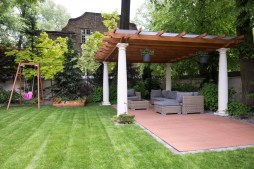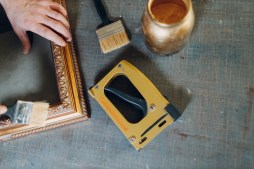Attracting Butterflies and Bees: Tips for Designing Your Dream Garden

Do you want to create a vibrant and buzzing garden that not only adds beauty to your surroundings but also helps support local wildlife? Designing a butterfly and bee-friendly garden is the perfect way to achieve this. By creating an environment that attracts these important pollinators, you can contribute to the health of our ecosystems while enjoying the sight of colorful butterflies and the gentle hum of bees. Here are some tips to help you get started on designing your dream garden.
Choosing Native Plants
One of the key elements in attracting butterflies and bees to your garden is selecting native plants. Native plants have evolved alongside local pollinators, making them an ideal food source for insects. When choosing plants, consider their nectar-producing capabilities and opt for a variety that blooms throughout the year. This will ensure a continuous supply of food for butterflies and bees.
To attract butterflies, include plants like milkweed, coneflowers, asters, and butterfly bushes in your garden. These plants provide nectar-rich flowers that are irresistible to butterflies. For bees, go for flowers such as lavender, sunflowers, goldenrod, and bee balm. These plants offer an abundant source of nectar and pollen that will attract various bee species.
Provide Shelter and Water Sources
In addition to food sources, providing shelter and water sources is essential for creating a butterfly and bee-friendly garden. Butterflies seek shelter from wind and predators in tall grasses or dense shrubs. Consider incorporating native grasses or planting shrubs along the edges of your garden to create these sheltered areas.
Water is also vital for pollinators’ survival. Create shallow water features such as small ponds or birdbaths with rocks or floating objects where butterflies can land safely without getting submerged. Bees require access to clean water too; you can provide this by placing shallow dishes or a water-filled saucer with pebbles in your garden. These water sources will not only attract butterflies and bees but will also benefit other wildlife that visit your garden.
Avoid Chemical Pesticides
To create a truly bee and butterfly-friendly garden, it is important to avoid using chemical pesticides. Pesticides can be harmful to pollinators, disrupting their natural behavior and even causing death. Instead, opt for organic pest control methods such as companion planting, which involves planting beneficial flowers or herbs alongside your garden plants to deter pests naturally.
Encourage natural predators like ladybugs and lacewings that feed on common garden pests. By creating a balanced ecosystem in your garden, you can minimize the need for chemical pesticides while protecting the health of pollinators.
Provide Sunlight and Diversity
Butterflies and bees thrive in sunny environments with a diverse range of plants. Ensure that your garden receives adequate sunlight by selecting an appropriate location for planting. Most flowering plants require at least six hours of direct sunlight per day to produce ample nectar.
Diversity is key when it comes to attracting different species of butterflies and bees. Plant flowers of different colors, sizes, and shapes to cater to various preferences. This will not only create an aesthetically pleasing garden but will also increase the likelihood of attracting a wide range of pollinators.
In conclusion, creating a butterfly and bee-friendly garden is both rewarding and beneficial for our ecosystems. By choosing native plants, providing shelter and water sources, avoiding chemical pesticides, and promoting sunlight and diversity in your garden design, you can attract these important pollinators while adding beauty to your outdoor space. So why wait? Start designing your dream garden today.
This text was generated using a large language model, and select text has been reviewed and moderated for purposes such as readability.





